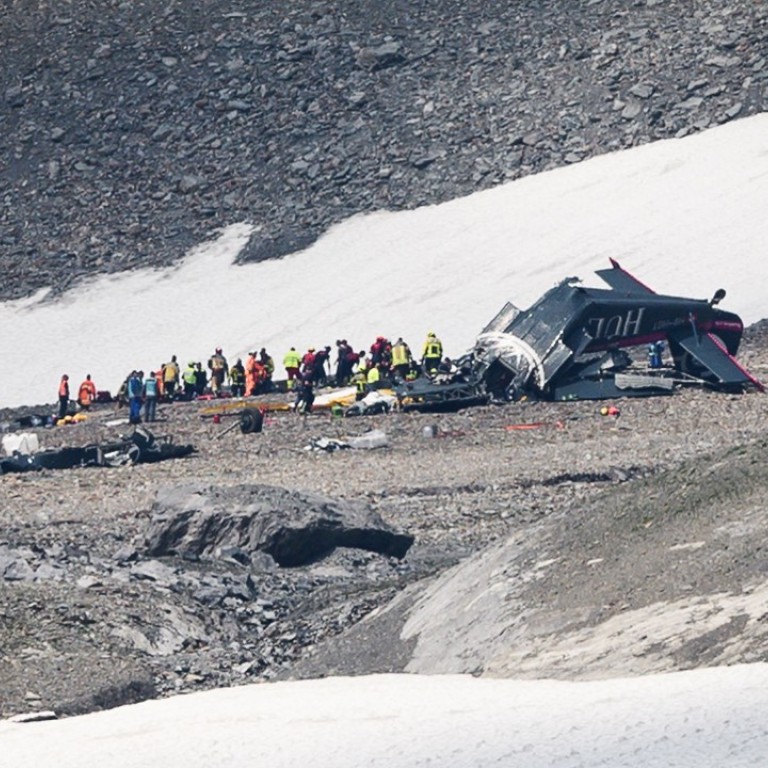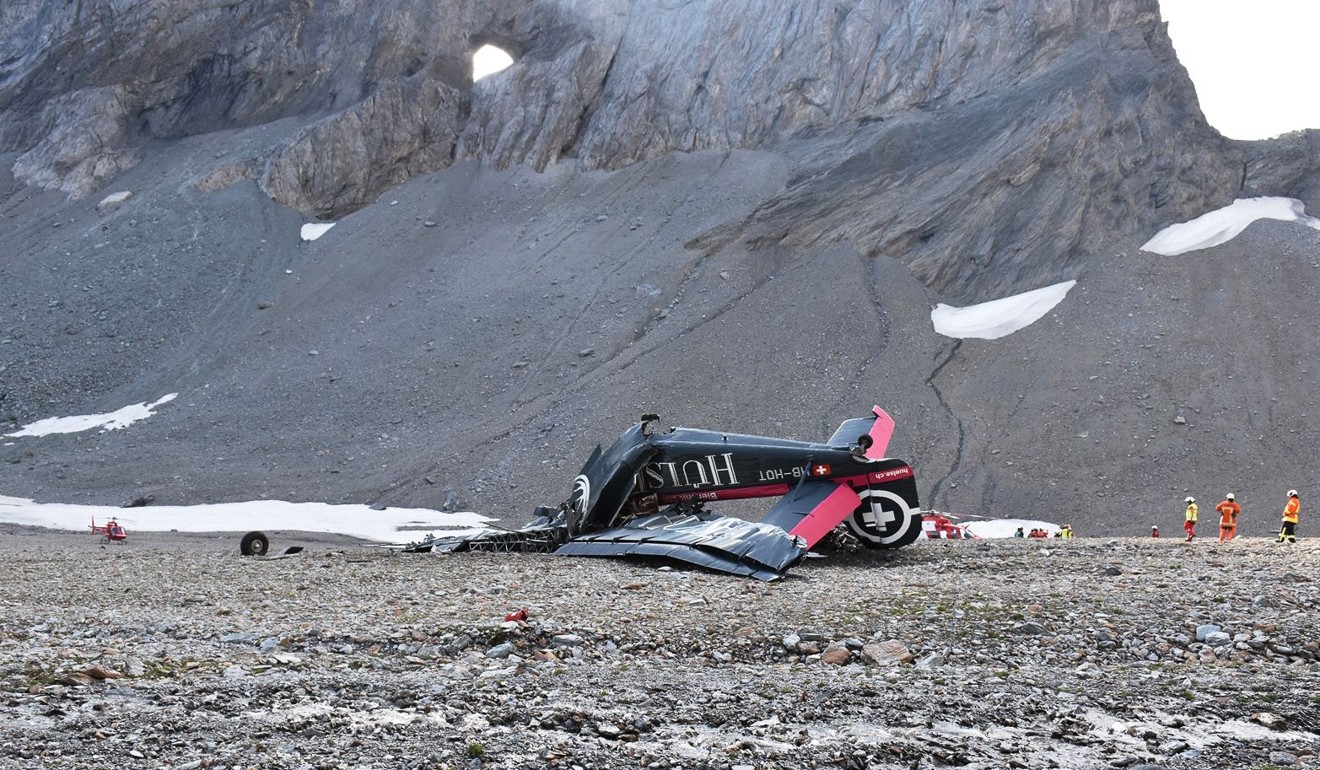
Heatwave could have caused crash of vintage plane in Swiss Alps that killed 20
Unusually high temperatures may have thinned the air and reduced the plane’s expected power at certain altitudes
A record heatwave across Europe that sent temperatures in Switzerland as high as 34 degrees Celsius may have caused the crash of a vintage propeller plane that slammed into the side of a Swiss mountain Saturday, killing all 20 on-board.
The plane went straight down, crashing almost vertically into the western flank of the Piz Segnas mountain at about 5pm local time Saturday. It crashed at high speed, officials said.
Photos released by state police in the area showed the crumpled wreckage of the plane, with only the tail, twisted over and upside down, still somewhat intact.

The 1939 Junkers Ju-52, of a type nicknamed Iron Annie, was returning from the resort town of Locarno in southern Switzerland.
The plane was about 50 minutes into its flight when it crashed. Authorities said no emergency call was made in the moments before the plunge.
“High temperatures can affect the performance of an aircraft,” Daniel Knecht from the Swiss safety investigation agency said in a press conference held Sunday near the crash site in the Alpine resort of Flims, Switzerland.
While heat itself doesn’t harm the plane, it can affect how it flies, as heat is associated with a thinning of the air. “The aircraft has less power at the same altitude, you can feel it at the start or in a curve,” Knecht said in the news conference, as reported by the Swiss German-language newspaper the Neue Zürcher Zeitung.
Kurt Waldmeier, co-founder of Ju-Air, the company that operated the flight, said the pilot was very experienced. The 62-year-old had flown more than 30 years for the airlines Swiss and Swissair and the Swiss Air Force. The co-pilot, 63, had flown more than 30 years as a line and military pilot, Waldmeier said at the news conference.
Europe has been sweltering under a record heatwave.
The Swiss-based Ju-Air service offers sightseeing and adventure flights in mid-century Junkers Ju-52 aircraft, which were decommissioned by the Swiss Air Force.
Although the plane was 79 years old, Waldmeier said age was not a factor. It had been well-maintained and like the other two Ju-52s the company operates, and was serviced every 35 hours. It had only flown five hours since its last maintenance, he said.
Because of its antique nature, the aeroplane had no black box so authorities will not be able to use that to determine what happened.
Swiss aviation authorities have ruled out outside interference, collision with a cable or other obstacles. There was also no evidence that the aircraft has lost any parts or been broken up in the air, Knecht said at the news conference.
Nearly 5,000 of Ju-52 planes were manufactured between 1932 and 1952. Fewer than 10 are still flying. The aircraft have three engines, one on the nose and one on each wing.
Swiss Ju-Air began operating flights with the vintage planes in 1983. It has suspended all flights until further notice, according to its website.

